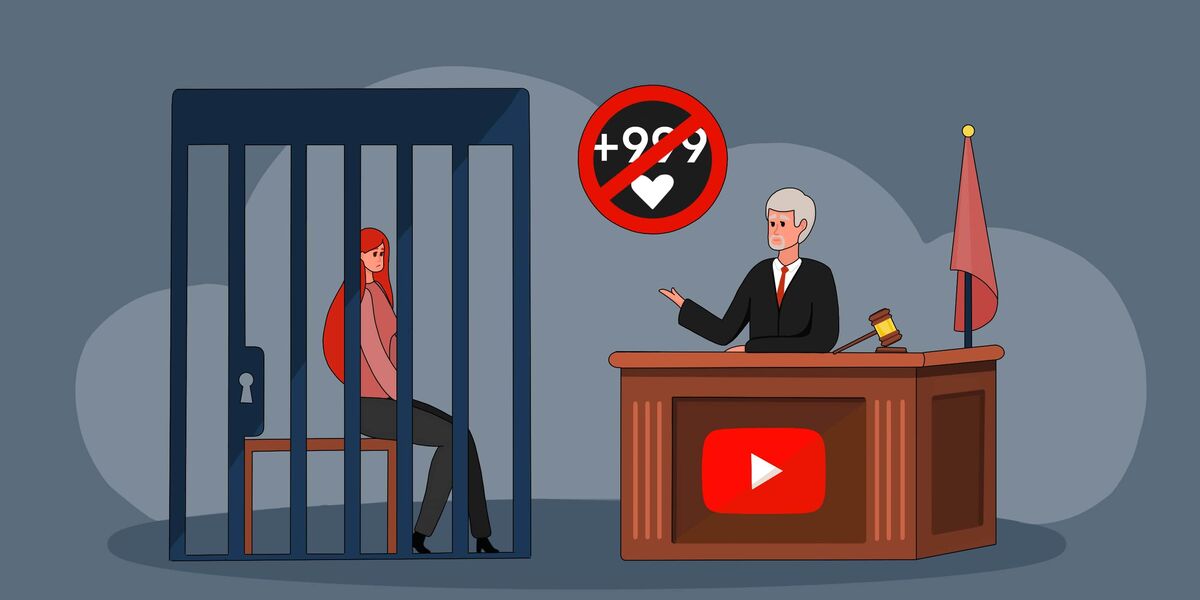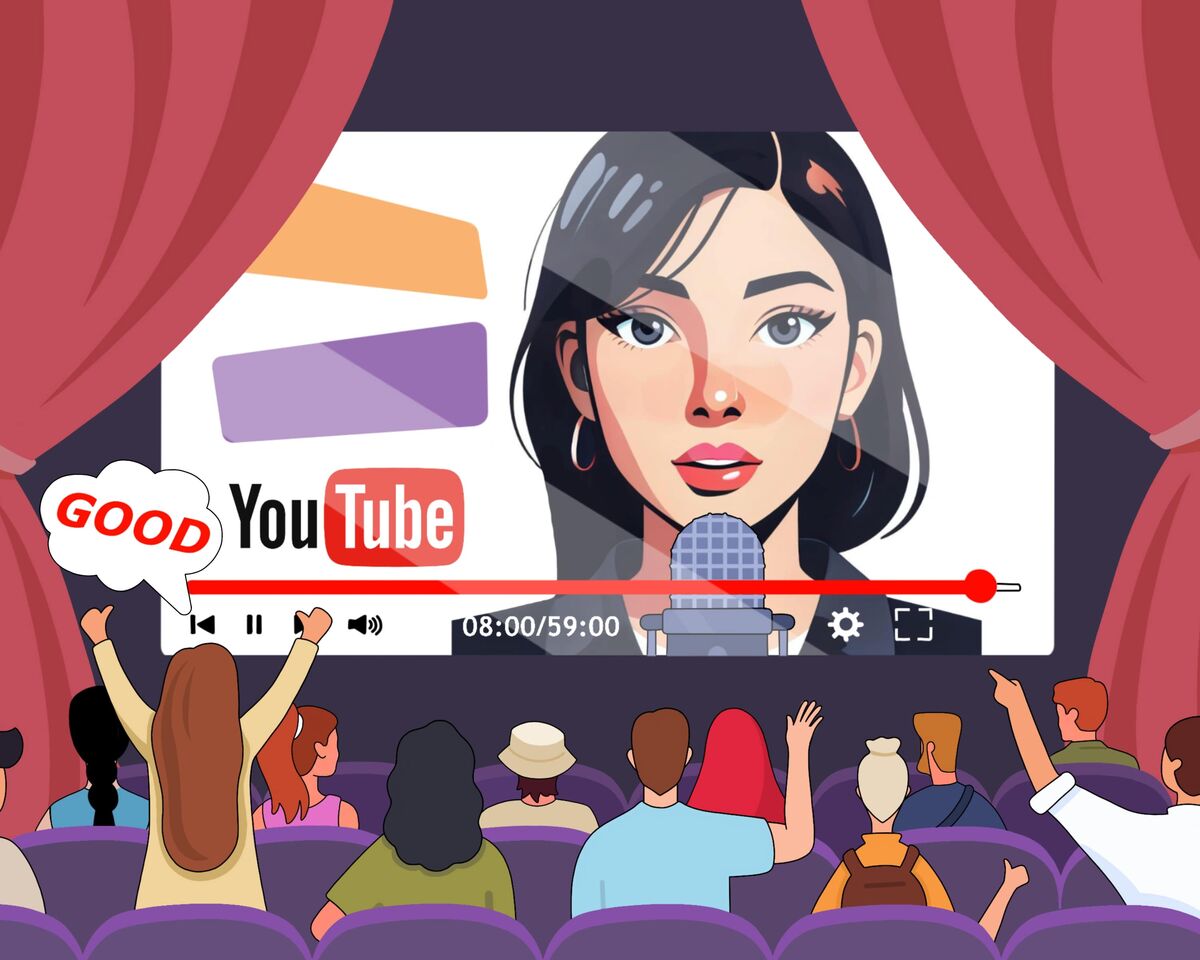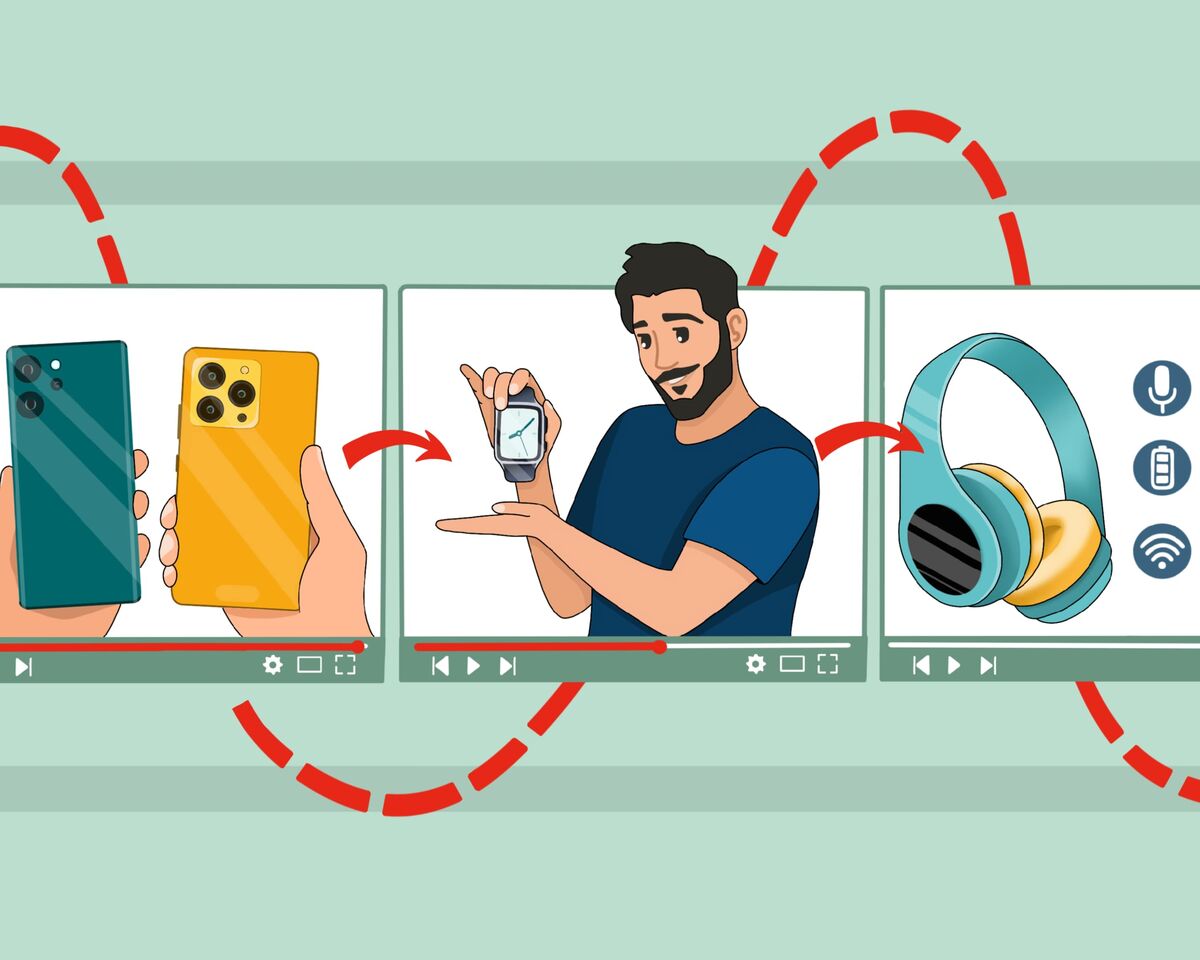What Is Fake Engagement on YouTube — and Why Doesn’t It Work?

Many of you have probably found yourselves in this situation: your channel isn’t growing, there are no views, progress has vanished, and you feel stuck. And it’s exactly in moments like these that a scary thought creeps into a creator’s mind — what if I just buy some views and subscribers?
This illegal method of boosting a channel is a relic from the old days of YouTube, back when subscriber count played a huge role. But these days are gone now.
Our goal today is to talk about the dangers of fake engagement, the different types, and of course — how YouTube detects and punishes violators.
Youtube fake engagement policy
Fake engagement is the artificial increase and inflation of performance metrics. These are actions performed either by fake users (bots) or by real people, but not out of genuine interest.
In other words, it can involve bots as well as real users who watch your videos for a small payment or as a favor — without watching to the end, without reacting, and without showing real interest.
Such fraudulent practices — artificial inflation of metrics — are considered invalid traffic on YouTube.
The platform urges all creators to be cautious and stay away from shady services. And there are at least two important reasons for that:
YouTube sanctions and the consequences of low-quality promotion, which you’ll be left to deal with.
If you still doubt that YouTube can detect invalid traffic — rest assured, it will. It will subtract those views, likes, and subscribers. That’s why the Creator Support Forum is filled with complaints that YouTube is allegedly “removing views.” In reality, it’s not “removing” anything — it’s identifying invalid traffic and cleaning it up.
However, the Analytics tab usually updates with a 1–2 day delay, so your numbers may change not only upward but also downward.
For example, on your main channel page, you may see 70 views on a video, while Analytics still shows 100 — even though YouTube has already removed all the illegitimate traffic. In that case, it’s best to simply wait a bit until all the data updates.
After YouTube finds and removes fake views (as well as other inflated metrics like likes, comments, and subscribers), your channel may face sanctions.
If there’s a significant amount of invalid traffic, the platform can immediately suspend or delete your linked AdSense account. This is done to stop irresponsible creators from earning money while violating the rules.
And that’s not even the worst of it.
YouTube may also delete your entire channel with no chance of recovery.
If the amount of invalid traffic is not too high, YouTube may simply delete the content associated with it — the video that received the fake views, or in some cases, one that contains a prohibited link.
Invalid traffic falls under the Community Guidelines, which means that for the first violation, you will receive an email notification. This is a preliminary warning before a strike.
Keep in mind, this notification is only sent once in your channel’s lifetime, right before the first strike for a Community Guidelines violation.
Note that such gentle warnings do not exist if you’ve violated copyright rules. If you commit a serious copyright violation, you’ll immediately receive a strike, with no prior warning.
Now, back to the notification for invalid traffic. It is not yet a sanction, since no restrictions are applied to the channel. YouTube simply lets you know that you’ve made a mistake and that you should correct it.
But if the platform detects invalid traffic again, or any other Community Guidelines violation, you will receive a strike.
Unfortunately, these are just the most obvious consequences you might face. But creators often assume that strikes are the worst that can happen to their channel. They promise themselves they’ll stop using fake engagement “after the first strike” or “once the channel takes off.”
In reality, fake engagement itself is the most dangerous consequence for your channel.
Let’s take a look at the most common types of fake engagement to prove this point.
We want to warn you right away: we won’t be naming any specific services that artificially boost metrics. That would also be a violation of YouTube’s rules.
So let’s protect our channels and instead talk about how these services work — and more importantly, the consequences they bring.
Types of fake views and subscriber boosting on YouTube
And we'll start with bots.
Views, likes, comments, and subscribers from fake people, that is, bots, are perhaps the cheapest and least effective type of fake engagement. Here's how it works.
Automated systems create a large number of fake accounts that show activity toward your channel. That is, they view your videos, like them, leave comments, and even subscribe.
There are many formats of bot-based fake engagement. You can buy just likes or just views, for example. Or you can buy a full package of everything at once or purchase a fixed number of views for a video.
Since there are many such services, they compete with each other and try to offer the best conditions. Some have lower prices, others faster turnaround times. But even among this primitive type of engagement, there are very low-quality options. Let’s look at an example.
Let’s imagine a situation where a channel owner turns to a service to attract new users.
Note #1. Almost no one will call this process "fake engagement." They will promise you quick popularity, a fixed growth in subscribers, and a set number of views. Every service will promise you real subscribers.
Such wording should raise red flags, because proper promotion requires an evaluation of the channel and its target audience, defining who to promote which videos to, and only then discussing possible growth metrics.
Back to our theoretical situation with the channel owner.
They choose the type of promotion that suits them best. For example, 100 subscribers per day with corresponding video views.
Note #2. If we’re talking about real promotion, where the service tries to find an audience genuinely interested in your content, it’s impossible to plan a fixed increase of exactly 100 subscribers per day. The growth will be inconsistent and varied.
Once you've chosen a plan and paid for the service, the fake engagement service programs bots to create the necessary activity on the channel. In the worst case, the views will be extremely brief — just 5–7 seconds, just long enough to be counted.
In the end, YouTube will definitely notice what’s going on. One hundred random users with no specific interests or watch/search history suddenly start watching your video. YouTube’s smart algorithms will be baffled, because it’s obvious to the platform that the video shouldn’t interest these 100 viewers. So YouTube digs deeper to see where these users came from.
You can check this yourself. Go to the “Analytics” section, choose the “Content” category, and go to “Traffic source.”
This will show you how users found your video. You can add a secondary metric in “Traffic source” — “Subscriptions.”
The platform will show what exactly motivated the user to subscribe to your channel. With natural, organic subscriptions, it might be “YouTube Search” or “Shorts Feed.”
Everything makes sense so far: someone watched a video or a short, liked it, and subscribed.
But if a large number of subscribers come from “Channel pages,” that’s when you should start to worry.
“Channel pages” refers to your channel or channels of other creators with similar themes. So it means a user just visited your channel and immediately subscribed, without watching anything — not even one short.
What motivated such a person — YouTube has no idea.
So Note #3 — watch your traffic sources.
Usually, YouTube doesn’t act quickly without confirming violations, so it’s unlikely your channel will be banned right away. Most likely, it will start monitoring your content for a while.
Let’s say your channel has 1,000 subscribers, but only 100 of them are real people. When you publish a new video, YouTube might show it to, say, 200 of your subscribers — randomly selected from the entire 1,000.
Given that the overwhelming majority of the 1,000 are bots, they won’t react to the new content. Simply because you didn’t pay them for that. You paid for views on a previous video — and that’s what you got.
YouTube concludes the new video didn’t perform well, since the selected users didn’t watch it. The platform then decides to hold off on showing the video to more people.
And that’s what will happen with every video you publish. With each one, views will drop lower, engagement will fall to zero, and the channel will stall.
Usually, it ends with the creator abandoning the channel and starting a new one, or realizing that YouTube isn’t for them.
That’s what we meant when we said that platform sanctions are far from the worst thing that can happen when using fake engagement.
The worst part is the loss of time and motivation, because the channel will inevitably stall — YouTube’s algorithms are far more advanced than fake engagement tools.
You might think the problem lies specifically with bots, and things will go better with real users. Let’s dig into that next.
- Real people
There are also a huge number of fake engagement options using real users. It usually works like this.
There’s a website where people register to complete small tasks and get paid or earn points for doing so. And there’s a second website where you can spend that money or those points on fake engagement for your channel.
So, a person finds a task like: “Watch a video on YouTube.” They watch it and get rewarded. It might not sound so bad — after all, it’s a real person watching your content.
But the problem is, they may start watching the video and immediately close it, are unlikely to leave a comment, and very unlikely to subscribe. And even if you pay more and they do all of that, this user still isn’t your target audience. They won’t continue watching your content and won’t be interested in it. They’ll complete the task and then just sit like dead weight on your channel.
That’s why Note #4 — it’s better to have 10 interested viewers than 100 random ones.
YouTube will also offer new videos to those 100 users, and they won’t engage with them. Because of this, the platform will hold back showing your new content, since it’s clear that the content doesn’t interest viewers.
Even if you decide not to pay people for subscriptions and go for sub4sub — that is, you subscribe to another creator’s channel, and they subscribe to yours in return — it won’t lead to anything good. These are the same dead subscribers who, based on their interests, are not part of your channel’s audience.
As a result, you might have some views and even the number of subscribers you wanted. But this won’t help your channel grow or develop.
You won’t even be able to evaluate your audience properly, and the entire Analytics section, which can actually help a creator build a solid promotion strategy, will be useless to you.
Because what could you evaluate with such an audience and view count? Random users scattered around the world, of various ages and interests? And you even paid them just to pretend to care about you once.
- Content seeding
This is paid placement of your content from YouTube on social networks and various platforms on the internet.
So, you publish a video on YouTube, and it gets shared in various thematic groups and social networks. Therefore, when done well and honestly, seeding can really provide you with a new, interested audience, especially if the company you contacted analyzed your content and shared it with people who have similar interests.
However, many companies offering seeding behave dishonestly. They distribute your video but call upon bots for views and subscriptions, which turns the channel into a dead one.
Therefore, paid placement itself is not bad and is quite a legal thing, but it’s easy to run into scammers with it.
If the fake engagement happened not because of your fault, but someone decided to add views from bots, YouTube will definitely recognize this and automatically remove all inactive views and likes within 48 hours. Just wait for the statistics to update. You won’t face any penalties for this — it will just be the removal of illegal views and subscribers. So take a deep breath and wait for YouTube to do its job.
What conclusion can be made from all of this? Don’t hope that you can cheat and no one will notice. Even if YouTube somehow delays removing illegally gained metrics, there will always be people who will report the injustice. Think ten times whether it’s worth the risk.
Preparing the channel for promotion
If at this point you got scared and see fake engagement everywhere — don't worry. YouTube still has legal ways of promotion, not fake engagement, but real content promotion.
Typically, this involves purchasing ads through YouTube’s own service — Google Ads. This is the only fully legal method where you don't risk your channel.
Your videos will appear more frequently on search and watch pages, in the "Recommended" section, and on the main page of the mobile version of YouTube.
We can confidently tell you about a service that has long established itself as a reliable tool for quality and effective promotion on YouTube.
Our service, Prodvigate, takes control of the complex process of video and channel promotion and makes it accessible to users. We are an official Google partner and use only "clean" methods through the Google Ads system.
In fact, promoting through Google Ads is the only legal option. But, there are challenges. At the very least, it’s not a fast method of promotion.
However, there are other pitfalls. The fact is that your channel's content must fully comply with YouTube's rules. What does this mean?
When you submit an application for advertising via Google Ads, YouTube will review your channel. If you have controversial or borderline content that might not be approved by YouTube, the platform won’t approve it for ads. In this case, the only option to expand your audience is to find a company that specializes in quality content seeding.
In any case, we strongly recommend not rushing to pay for promotion, even if it is high-quality, and suggest that before any advertising campaign, you sit down and carefully think about whether your channel is ready for paid promotion.
If you can’t assess it yourself — which is completely normal — you can consult with experts. Objectively assessing your own content is very difficult. However, forming an opinion about someone else's channel is always much easier.
Now, let’s briefly go over a few points that you must clearly understand:
- Channel topics and target audience.
You must be able to clearly and simply state what your channel is about and who it is for. This should be a very specific answer.
For example: "My channel is about independent budget travel across Canada. It's for young, energetic people without children who have flexible work schedules."
Don't try to reach the widest possible audience by creating content for everyone. This will only waste your energy, time, and money. Focus on what interests you and your like-minded followers.
- Strategy and content plan
If you've seriously decided to grow on YouTube, it's important to understand that this is a job, not a hobby. Therefore, your approach should be accordingly. After all, if you've already considered spending part of your budget on advertising, we can assume that you have a very serious mindset.
You need to choose a well-thought-out business strategy, create a content plan, and start working hard. It's almost impossible to succeed quickly on YouTube. It requires meticulous and diligent work.
- Optimization
We will never stop talking about optimization. Users need to be able to find your video in the vast ocean of content on YouTube. You must analyze search queries and your audience to create the correct title, video description, thumbnail, and other metadata.
- The channel should be filled.
Before starting any promotion, you should already understand your style, audience, and topic, and be able to properly optimize your videos. There’s no point in promoting a channel with three random videos. A casual user visiting your channel should find plenty of content that interests them, encouraging them to subscribe and watch your videos.
Therefore, the better the quality of your channel and the content on it, the more successful your paid promotion will be, and the more organic growth it will bring.
This is the main point of paid promotion — you simply find your viewers faster, allowing them to enjoy your content and help it reach more like-minded people!




